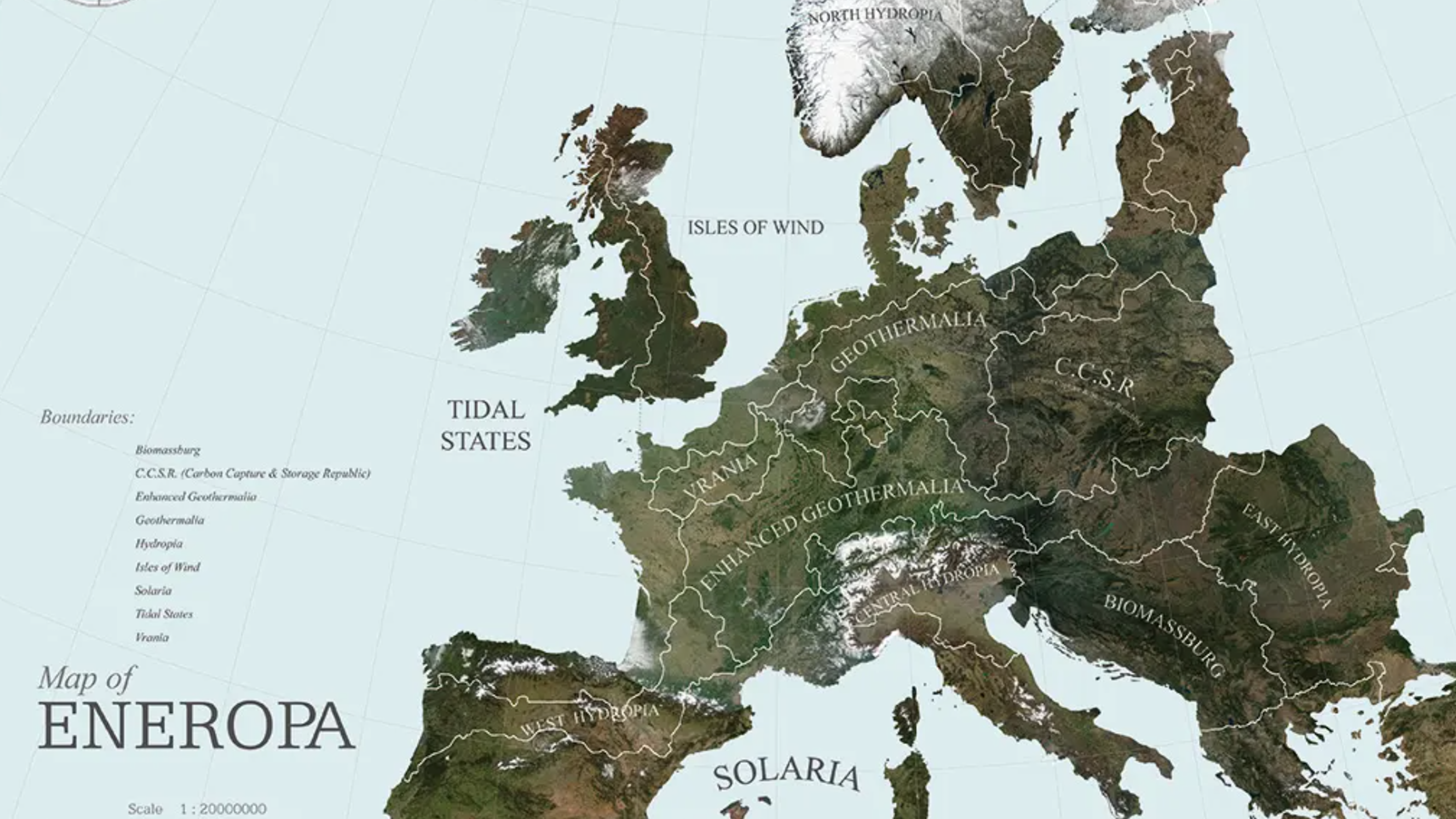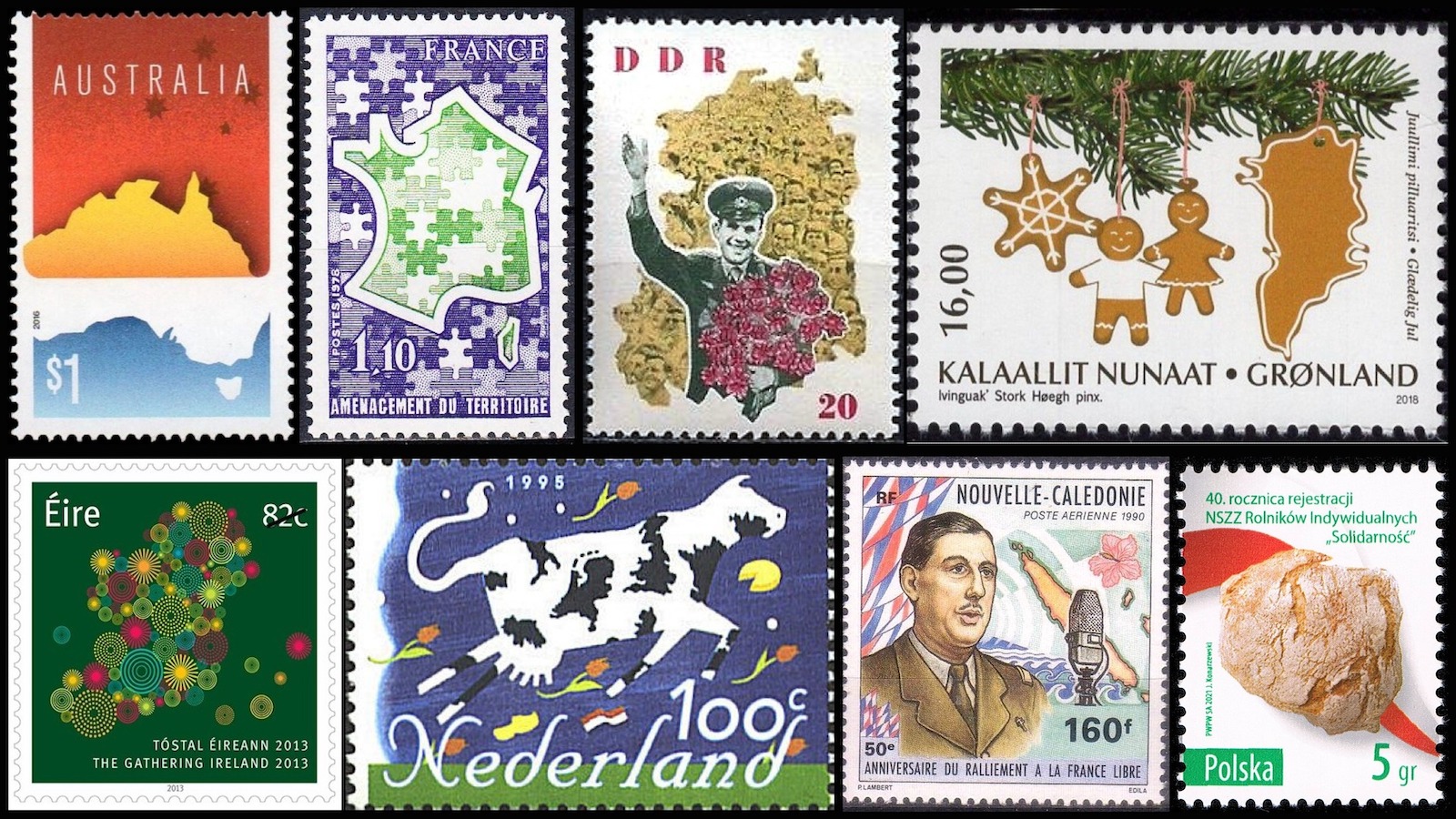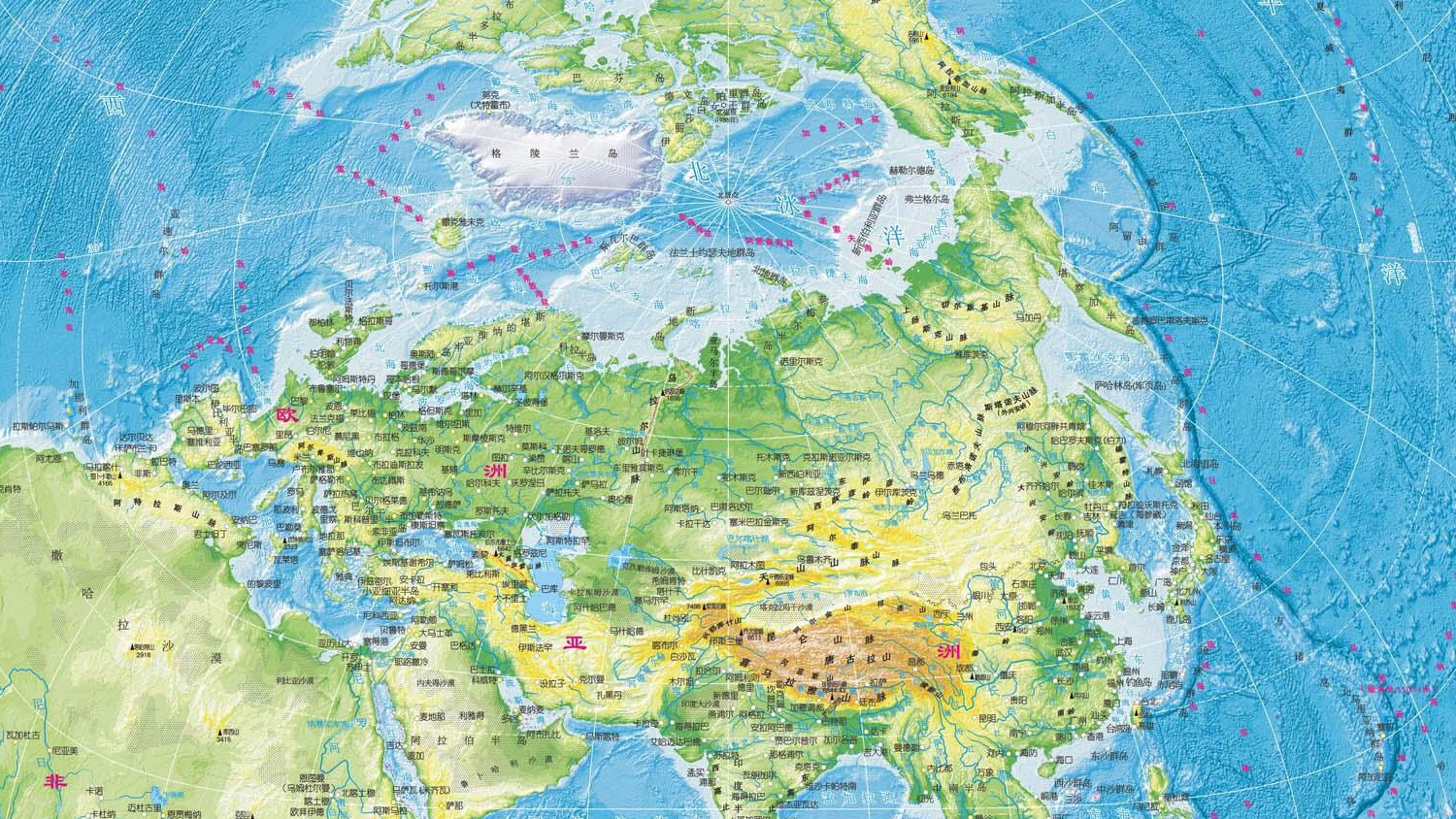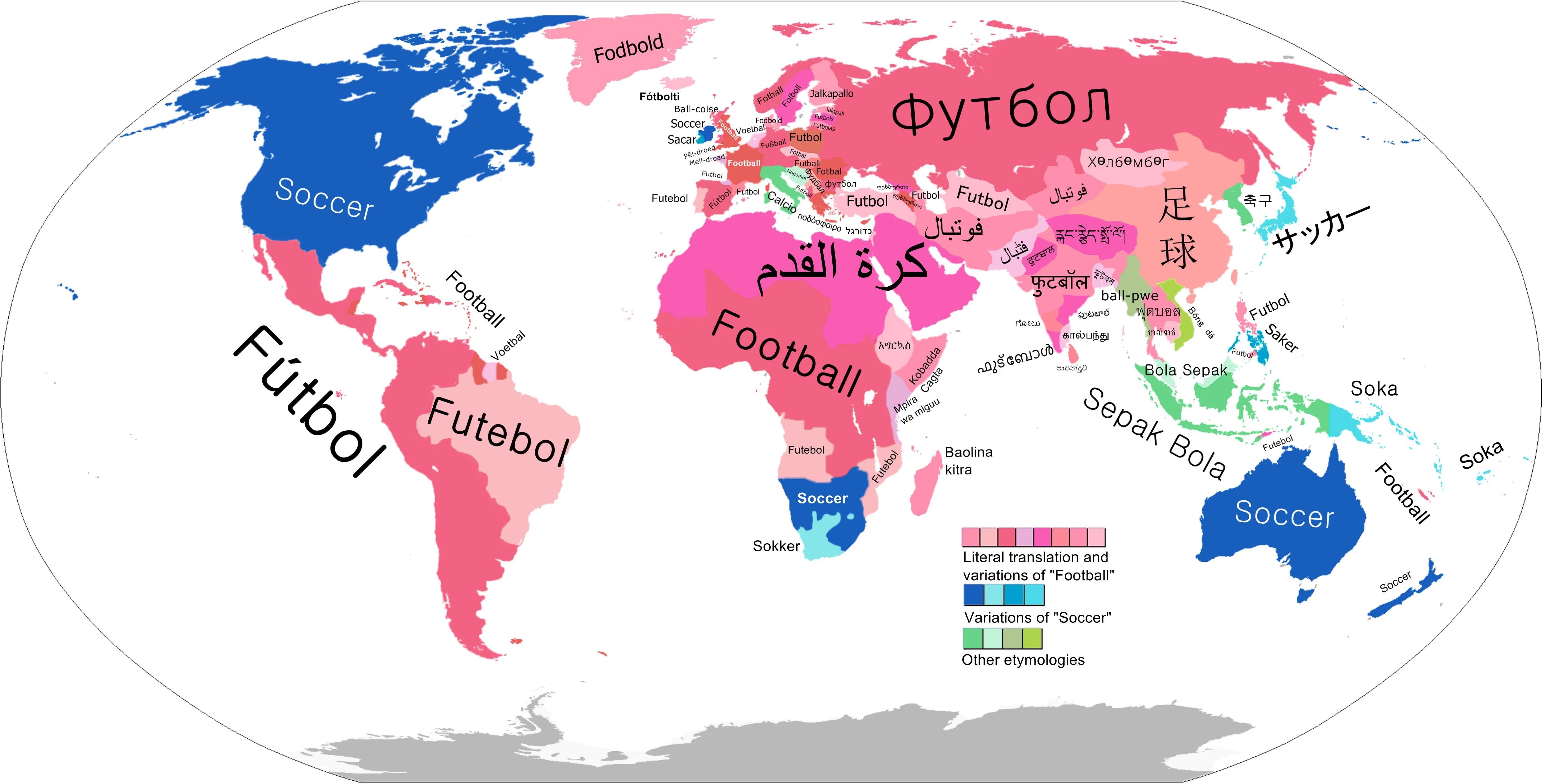Map of the World’s Countries with Mathematically Objective Borders

Planet Voronoi looks almost exactly like our own Earth. The continents are all in the same place. The number of countries hasn’t changed, nor has the location of their capitals. But the international borders are all wrong. Interestingly wrong.
Just take a look at those straight borders, all patterned after some abstruse logic. The result is a global ensemble of lines and angles with a weird structural beauty, as if Planet Voronoi were an intricately, delicately cracked Christmas tree ornament.
On our own planet, international borders are the detritus of history, reflecting ancient battle lines or the more recent twin triumphs of diplomacy and trigonometry. They can follow cultural and religious fault lines or ignore them at their peril. They may be familiar to us, but essentially our borders are completely accidental – which explains why they’re so often contested, and occasionally changed.
But on the other planet, borders follow mathematically impartial pathways, laid out by so-called Voronoi diagrams. Named after the Ukrainian mathematician Georgy Voronoy, such diagrams are used to divide a space containing a number of points or ‘seeds’ into an equal number of zones, with each zone containing the entire area closer to a particular seed than to any of the other ones.
So on Planet Voronoi, the international borders are fixed – so long as the number and location of international capitals also stays the same. There can be no argument between countries over territory, no land grabs, no secessionist insurrections. It sounds like Ukraine could use a few latter-day Voronoys, Kiev being closer to both the Crimea and the self-declared Donetsk People’s Republic than Moscow.
As an added advantage to mathematically inviolable borders, the Voronoi solution provides each state with territorial compactness and proximity to its capital. It’s an oft-cited problem in countries with an extremely elongated shape (Chile, Norway, Indonesia) or with eccentric capitals (like London, tucked away in the south east corner of the UK): The capital is so far away, they don’t even know we exist.
So it seems the Voronoisians have it made in the shade. But their idea of efficiency and security comes at a cost. Their international borders ignore the many histories, cultures, languages and religions so jealously guarded and protected by our own lines on the map. Such a degree of demarcational abstraction horrifies most of us – even though it can’t be said the idea has never been entertained here (see #18 and #159).
Still, it’s an interesting experiment to look in that cracked mirror, see this alternate set of international borders and think that perhaps the Voronoisians too have some reason to think that it’s our borders that are all wrong.
South America: a Downsized Brazil
Despite the prescience of moving its capital in 1960 from coastal Rio de Janeiro to Brasilia deep inland, Brazil loses more than half of its territory to its neighbours – a large chunk to Guyana and Suriname, no longer South America’s smallest countries.
Still, it could have been worse. Like Argentina: reduced to a shadow of its former self, mainly by eternal rival Chile, expanding from a pinstripe to the continent’s cricket bat.
Some of the winners might feel historical justice is being restored: Ecuador regains some of the hinterland it once claimed, Bolivia regains the access to the sea it lost to Chile. Wait a minute: are there two Bolivias? Yes: the northern (green) one is centred on La Paz, its seat of government; the southern (blue) one on Sucre, its official and judicial capital. Now that’s prescient – having two capitals instead of one.
North America: Cuba Takes New Orleans
In the new world’s northern half, the United States is the biggest loser, suffering for the eccentricity of its national capital (see #389), located on its eastern shore in Washington DC instead of somewhere near Belle Fourche, South Dakota, its geographical centre (or somewhere in between, see #492).
Remarkably, here too old wrongs are righted: Mexico reclaims all that was lost in the war of 1846-’48, from Oregon to Louisiana. Ottawa takes the top off the Lower 48: Seattle and Boston become Canadian cities. The Maple Leaf flag flies over most of Alaska. But the Canadians lose their own High North to Iceland, which also takes over Greenland from Denmark – and even annexes the northern part of Alaska (the western part of which turn Japanese).
In the former USA’s Deep South, the Cuban bandera flies over the Gulf Coast from west of New Orleans all the way down to Tampa. Florida is sliced in two by the Cuban-Bahamian border, with Miami ruled from Nassau across the water.
Africa: Grand Maroc, Tiny Algeria
In Africa, at first sight a familiar pattern: relative density of capitals on the coast, especially in West Africa, and relative scarcity of capitals inland, especially in the Sahara. Some of the most remarkable gains are made by two of the continent’s smallest countries: Rwanda and Burundi, each taking over massive slices of the DR Congo and Tanzania. Some might say that this is what actually happened over the last decade and a half, at least as far as Rwanda is concerned, if only in the DRC.
Another remarkable fit: Voronoi Morocco resembles the borders of le Grand Maroc of centuries past, when the Kingdom comprised a larger part of North Africa. Could it be that these Voronoi diagrams unwittingly reflect such ‘ideal’ country sizes and shapes that they resemble reality, if only historical reality in this case? Case in point: Namibia, almost contiguous with its Voronoi projection.
Could this be the country with the stablest borders in Africa? (We’re forgetting for a moment the Caprivi Strip – not included in Voronoi Namibia, and indeed the locus of a separatist movement). If the theory holds, that spells trouble for Algeria, reduced from an entire pizza to a single slice by its hungry neighbours. And of course Congo, a pitiful triangle dangling from the coast and no longer a proud parallellogram at the centre of the continent.
Asia: a New Mongolian Empire
Siberia is no longer Russian, but at least Moscow can draw comfort from the fact that it wasn’t gobbled up by the likeliest of its arch enemies, the Chinese. No, Russia’s hold over northern Asia has been broken by the Kazakhs, the Mongols and the Koreans, with the Japanese reclaiming Sakhalin and annexing Kamchatka.
China itself is reduced to a fragment of its former self, by the Taiwanese (finally back on the mainland), the Vietnamese and, in the most audacious annexation of all, by the Bhutanese. The home of Gross National Happiness now is a landlocked superpower.
India too has been curtailed, by Nepal, Bangladesh and Sri Lanka – Pakistan finally managed to annex Kashmir (see also #692), but lost much of its other border area to Afghanistan, and its south to Oman (again, not without historical precedent). Oh, and did we say Korea takes over part of Siberia? We ment North Korea. South Korea, hemmed in on all sides, only gets to annex the southern tail of Japan, and a little nibble out of China.
Oceania: Timor, Papua and Brunei Rule
Splendid or not, New Zealand’s isolation means things in the land of the long white cloud stay exactly how they are. Australia, on the other hand, splits into three (its division slightly resembling the Czech flag): the lower third remaining within the governmental orbit of Canberra, the northwestern half reverting to East Timorese rule, and the remainder in the north owing allegiance to Port Moresby, the capital of Papua New Guinea.
PNG also takes over most of the island from which it derives its name, while Brunei now rules most of Borneo. Indonesia retreats to its main island of Java and a few surrounding snippets. Singapore expands across Sumatra, while Malaysia takes over that island’s northern third.
Middle East: Riddle of the Sands
It’s good we have the dispassionate logic of maths to back us up. Very few sane people dare suggest border changes in the Middle East, wary of the cartographical equivalent of a fatwa, though again, some have tried (see #8), and other claim – with some justification – that the trouble started because some succeeded (see #70).
The biggest loser in the Middle East of Planet Voronoi appears to be Saudi Arabia. No wonder: one landlocked capital, surrounded by a lot of desert, ringed by the coastal capitals of its neighbours. The Saudis even lose the Holy Places of Islam, Mecca and Medina, to the Eritreans, just across the Red Sea. Yemen and Jordan are the biggest winners, eating up the Saudi south and north, respectively. Kuwait is another remarkable winner, expanding into a window enclosing the entire western end of the Gulf. The Emiratis are also eating into both Saudi Arabia and Iran.
Iraq is a net winner, Syria a net loser. Lebanon has extended deep into Turkey, Israel is pronging far into Saudi Arabia (and has retaken half the Sinai desert). Turkey is besieged on four sides, by a resurrected Armenia in the east and an irredentist Greece in the west, with Cyprus nibbling at its southern coast and Bulgaria and Romania at its European bits.
Europe: Georgia, douze points
Finally, Europe: the continent that invented – or at least perfected – both the sanctity of borders, and the deadly wars fought over them. The continent’s many pocket-sized states are the obvious winners in a Voronoi scenario and France, surrounded by so many of them, a clear loser. Monaco now includes large chunks of southern France and northern Italy. Andorra has rolled deep into French and Spanish territory, and is as big as its two chopped-to-bits former masters. Luxembourg is the regional power it always dreamt of being. Liechtenstein, San Marino and the Vatican complete the chain of not-so-small mini-states.
The UK is reduced to England by an Ireland that has taken in the entire Celtic Fringe (even including Cornwall [see #13]). France has shrunk back to the Ile de France it once was. The Netherlands have lost the south to Belgium, but annexed a large part of Germany (as some had suggested at the end of World War II [see #65]). Poland has moved east again – and so has Germany. Denmark has re-attached Skåne, the southern bit of Sweden that had been Danish centuries earlier.
Hungary grows, as does Serbia, but not necessarily in the areas they would want to. Macedonia enacts Greece’s worst nightmare, and takes over… Greek Macedonia. Ukraine, in spite of current tribulations, annexes adjacent parts of Russia and Belarus – but still loses Crimea (and southern areas), albeit this time to Moldova. Nobody saw that coming. And see what Georgia did? When nobody was looking, the country that got its behind kicked by Russia in the war of 2008 has annexed the entire Russian salient south towards the Caucasus, and even part of Kazakhstan.
Austria and Lithuania on the other hand have given up playing for territory, and are trying to win the Triangle Lookalike Contest. Portugal has given Spain a little but taken lots, and Morocco has regained a toehold on the European continent, ending a 5-century absence.
_________
These maps are the work of data visualisation specalist Jason Davies, who also repeated the exercise on a state capital level, creating a United States of Voronoi. See below. And check out his website for a host of other cool maps, Voronoi-based and otherwise.
United States: New York, New Jersey?
Strange Maps #657














